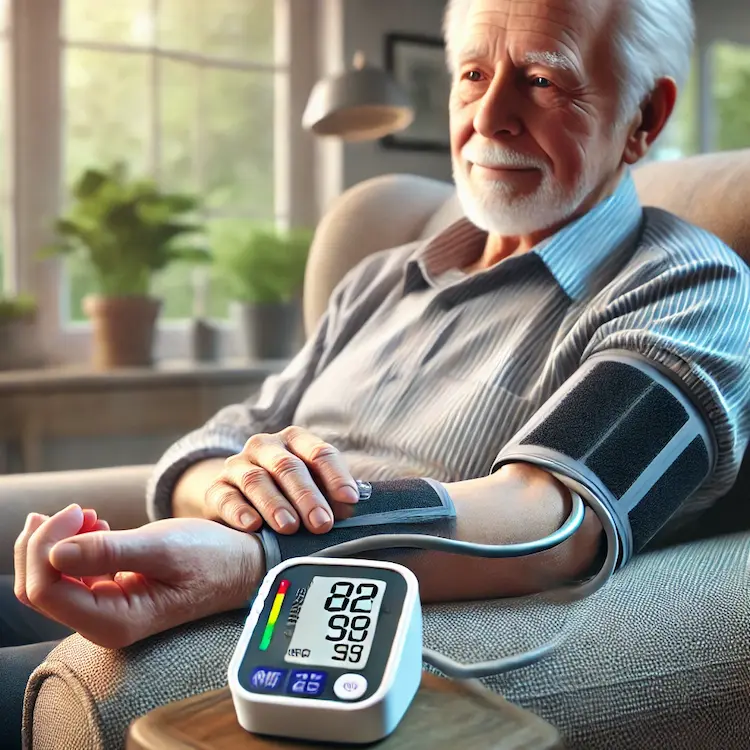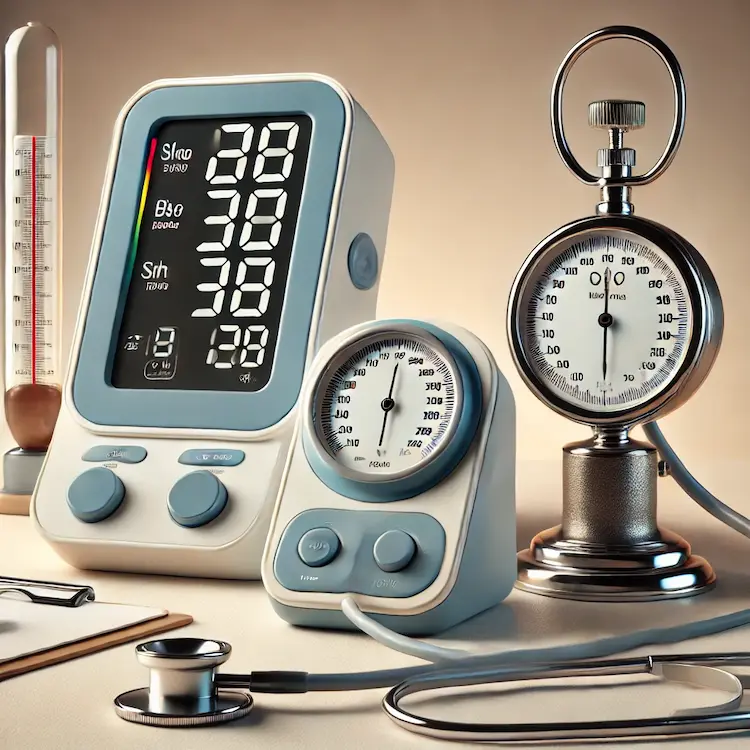Monitoring blood pressure is crucial for maintaining cardiovascular health. Whether you are managing hypertension, tracking fluctuations, or ensuring overall well-being, having a reliable how to choose a blood pressure monitor is essential.
Sphyg is a trusted supplier of clinically proven, innovative medical equipment. Choosing the right blood pressure monitor depends on several factors, including accuracy, ease of use, and cuff size. This guide will help you understand the different types of monitors, their pros and cons, and how to choose the best one for your needs.
Why Monitoring Blood Pressure Is Important
Early Detection of Hypertension
Hypertension is often called the “silent killer” because it has no obvious symptoms but increases the risk of heart disease and stroke. Regular monitoring can help detect high blood pressure early.

Reducing Cardiovascular Risks
High blood pressure contributes to heart attacks, strokes, and kidney disease. Tracking your readings ensures that your lifestyle changes or medications are working.
Managing Chronic Conditions
Patients with diabetes, kidney disease, or heart conditions require regular monitoring to prevent complications.
Avoiding White Coat Syndrome
Many people experience higher blood pressure in a clinical setting due to anxiety. Home monitoring provides a more accurate picture of your normal blood pressure levels.
Types of Blood Pressure Monitors
Blood pressure monitors come in different types, each with distinct advantages.
Digital (Oscillometric) Blood Pressure Monitors
How They Work:
Digital monitors use sensors to measure oscillations in the arteries and convert them into a blood pressure reading.
Pros:
- Easy to use
- Automatic inflation and deflation
- Stores previous readings
- Some models sync with apps for tracking
Cons:
- Can be affected by arm movement
- Batteries or charging required
- May be less accurate for individuals with arrhythmia
Manual (Aneroid) Blood Pressure Monitors
How They Work:
These consist of a cuff, a squeeze bulb for inflation, and a gauge to measure pressure manually.
Pros:
- More affordable
- No need for batteries
- Used by medical professionals for high accuracy
Cons:
- Requires training to use properly
- Harder to use alone
Mercury Sphygmomanometers
How They Work:
Mercury monitors provide the most accurate readings by using a column of mercury.
Pros:
- Gold standard in accuracy
- Long-lasting
Cons:
- Requires a stethoscope
- Not portable
- Mercury is toxic and banned in many regions
Wrist Blood Pressure Monitors
How They Work:
These monitors measure blood pressure from the wrist rather than the upper arm.
Pros:
- Compact and portable
- Ideal for travel
Cons:
- Less accurate
- Readings vary based on wrist position
Finger Blood Pressure Monitors
How They Work:
They measure pressure through a sensor placed on the finger.
Pros:
Cons:
- Not highly accurate
- More affected by hand movement
Comparison of Blood Pressure Monitors
To help you decide how to choose a blood pressure monitor, here’s a comparison of the different types of blood pressure monitors:
| Type |
Accuracy |
Ease of Use |
Portability |
Best For |
| Digital (Oscillometric) |
High |
Very Easy |
Moderate |
Home use, general monitoring |
| Manual (Aneroid) |
High |
Requires skill |
Low |
Healthcare professionals |
| Mercury |
Very High |
Requires skill |
Low |
Clinics, research |
| Wrist |
Moderate |
Easy |
High |
Travelers, casual use |
| Finger |
Low |
Very Easy |
Very High |
Occasional readings |

How to Choose the Right Blood Pressure Monitor
Consider Accuracy
Look for monitors that are clinically validated by organizations like the American Heart Association (AHA) or European Society of Hypertension (ESH).
Choose the Right Cuff Size
- Small (17-22 cm): For smaller arms
- Medium (22-32 cm): Standard size
- Large (32-42 cm): For larger arms
Using the wrong cuff size can lead to inaccurate readings.
Ease of Use
- Automatic monitors are ideal for home use.
- Manual monitors require training but offer greater accuracy.
Memory and Tracking Features
- Some digital monitors store readings, which is useful for tracking trends.
- Bluetooth-enabled monitors sync data with health apps.
Power Source
- Battery-powered monitors offer portability.
- Plug-in monitors eliminate battery replacement.
Budget
- Basic digital models range from $30–$60.
- Advanced models with app connectivity cost $80–$150.
- Professional-grade monitors can exceed $200.
Tips for Accurate Blood Pressure Readings
- Sit comfortably: Keep your back straight and feet flat on the floor.
- Rest before measuring: Wait at least 5 minutes in a relaxed position.
- Use the same arm: Measure from the left arm unless otherwise directed.
- Avoid caffeine and smoking: These can raise blood pressure temporarily.
- Measure at the same time daily: Morning and evening readings are ideal.
Conclusion
Choosing the right blood pressure monitor depends on your needs, accuracy requirements, and ease of use. Sphyg offers a range of clinically validated monitors to help you track your blood pressure effectively. By selecting a reliable device and using it correctly, you can take control of your health and reduce the risk of hypertension-related complications.
Key Takeaways
- Regular monitoring helps in early detection and management of high blood pressure.
- Digital monitors are the most user-friendly, while mercury monitors provide the highest accuracy.
- Choosing the correct cuff size is essential for accurate readings.
- Features like memory storage and Bluetooth enhance tracking and convenience.
- Follow best practices for accurate readings, such as sitting correctly and avoiding stimulants before measuring.
Actionable Recommendations
- If you need convenience, go for a digital monitor with memory storage.
- If you want professional-level accuracy, consider a manual or mercury monitor.
- Ensure the cuff size matches your arm for reliable readings.
- Take multiple readings at consistent times each day to track trends.

